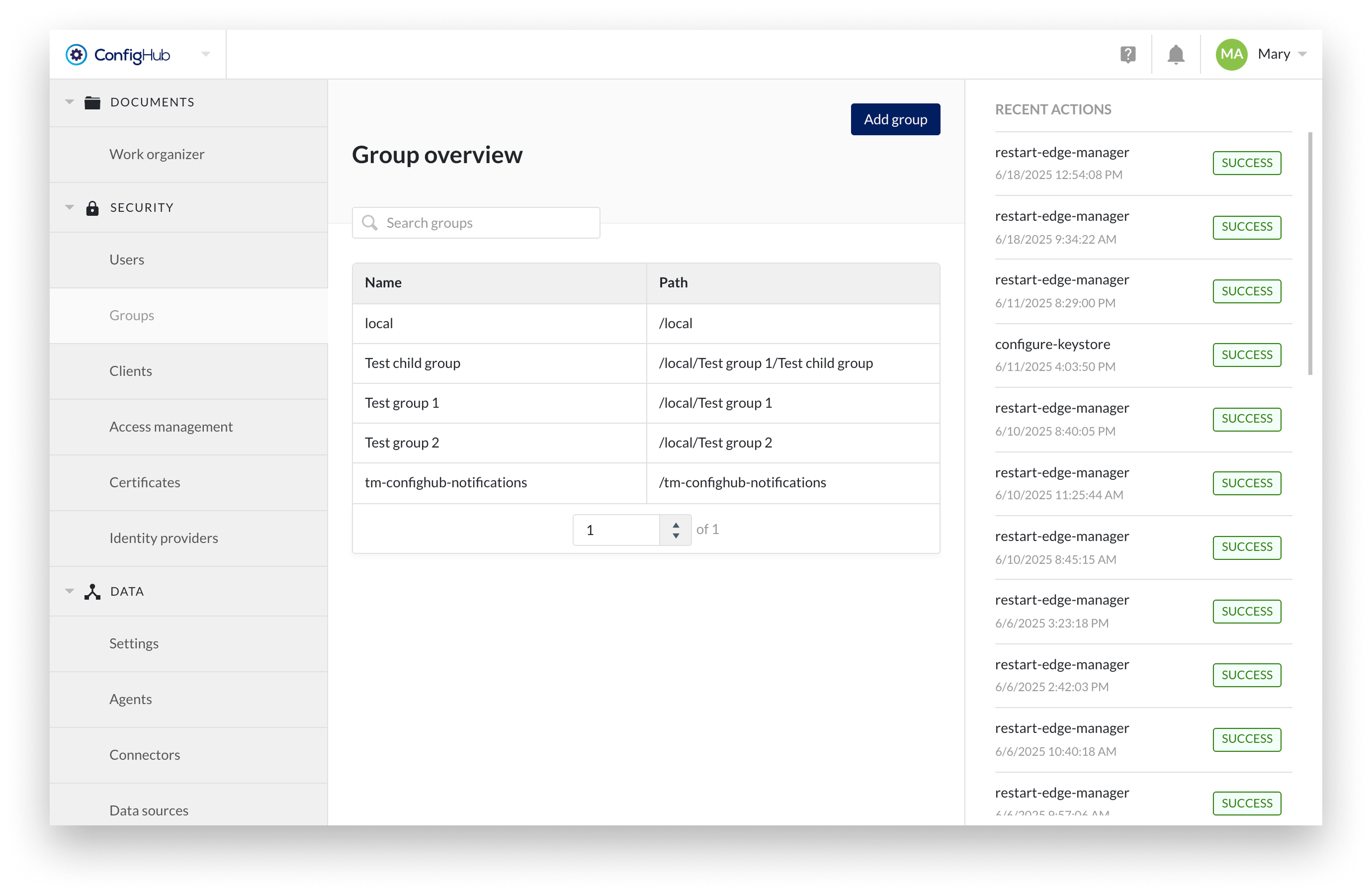Groups
Group management allows the creation of a collection of users and other groups (i.e. nested groups). An overview of all existing groups can be found under the "SECURITY" section in ConfigHub.
The group overview shows the group name and path of the groups so that it can be linked to its corresponding identity provider.
Specific groups can be searched through via the top right search bar above the table.
Creating Groups
Creating Groups is only allowed on a local level. In case of an external provider the groups are managed and synced into TrendMiner from the IdP itself.
It is possible to create local groups and assign users coming from LDAP or SAML or locally, to local groups and use access management to configure datasource access at group level.
To create a new group you will need to go to the Groups menu under the "SECURITY" section. From there groups can be added via the “Add group” button.
Note
A group can have only one parent group.

Configuring Group details
From the group overview a group can be clicked to see more details in the side-panel. Here more options can be performed such as:
Edit the name of a group
Delete the group
Add existing users/groups as member to that group
Note
These actions can only be done for local groups. Groups synced from an external IdP are non-editable and should be managed from the IdP itself.
Warning
Deleting a group will also delete all subgroups. A modal will be shown when this is the case. In case you want to keep the subgroups you will need to remove them first from the member list.
System group tm-config-notifications
The group tm-confighub-notifications is a non-deletable system group used to send important notifications via email to its members — even if they are not actively logged into TrendMiner.
This group is designed for admin users who should be immediately informed about critical configuration or data flow issues, such as:
Tag synchronization errors
Webhook delivery failures (see article “How to create a webhook?" for more details)
Failed context item writes to external systems (see article “How to configure Context Write capability?" for more details)
Adding users to this group ensures that email notifications (and in-app notifications) are delivered when issues arise, allowing for faster awareness and resolution.
Note
Only users with a valid email address will receive emails.